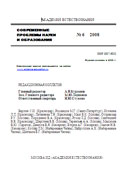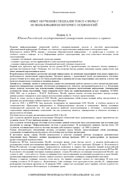PDF-версия статьи


|
- Mobile Learning. New advances in hardware and software are making mobile “smart phones” indispensible tools.
- Cloud computing. The implications of this trend for education systems are huge; they will make cheaper information appliances available which do not require the processing power or size of the PC.
- One-to-One computing. The trend in classrooms around the world is to provide an information appliance to every learner and create learning environments that assume universal access to the technology.
- Ubiquitous learning. School systems around the world are developing the ability to provide learning opportunities to students “anytime, anywhere”.
- Gaming. The phenomenal success of games with a focus on active participation, built in incentives and interaction suggests that current educational methods are not falling short and that educational games could more effectively attract the interest and attention of learners.
- Personalized learning. Education systems are increasingly investigating the use of technology to better understand a student’s knowledge base from prior learning and to tailor teaching to both address learning gaps as well as learning styles.
- Redefinition of learning spaces. Schools around the world are re-thinking the most appropriate learning environments to foster collaborative, cross-disciplinary, students centered learning.
- Teacher-generated open content. OECD school systems are increasingly empowering teachers and networks of teachers to both identify and create the learning resources that they find most effective in the classroom. Many online texts allow teachers to edit, add to, or otherwise customize material for their own purposes, so that their students receive a tailored copy that exactly suits the style and pace of the course.
- Smart portfolio assessment. The collection, management, sorting, and retrieving of data related to learning will help teachers to better understand learning gaps and customize content and pedagogical approaches.
- Teacher managers/mentors. The role of the teacher in the classroom is being transformed from that of the font of knowledge to an instructional manager helping to guide students through individualized learning pathways.
ICT are indispensable to the functioning of modern societies, these same technologies are equally indispensable to learning institutions. Students and professors should address this change in our society as a chance to improve our educational practices in order to achieve an education with quality.
The changing role of teachers, as we saw before, is an essential part of this changing process.
Their role should turn in a “guide of learning” better than in a “font of knowledge”. As ICT are incorporated in education the trend of a classroom and textbook based educational system is becoming more and more outdated.
It can clearly be seen that the education system should change to adapt to modern requirements and to incorporate new technologies. By incorporating these technological trends into the educational system a higher quality education can be provided at a cheaper cost and spread over a larger segment of the population.
References
1. Anderson, Jonathan. ICT transforming Education. A regional guide. Bangkok: UNESCO, 2010. Anderson, Jonathan. and van Weert, Tom. (Eds). 2002. Information and Communication Technology in Education: A Curriculum for Schools and Programme of Teacher Development. Paris, UNESCO. http://unesdoc.unesco.org/ images/0012/001295/129538e.pdf (Accessed 28 March, 2013)
2. Graham, Charles. R. Blended learning systems. Definition, current trends, and future directions. In C. J. Bonk. and C. R. Graham (Eds), The Handbook of Blended Learning: Global Perspectives, Local Designs (pp. 3-21). San Francisco, Pfeiffer, 2006.
ОПУБЛИКОВАНО
Усенова А.Ж., Момбекова С.С., Шаймерденова Г.С., Джусупбекова Г.Т., Кыдырбекова А.С. Main ICT´s characteristics. // Современные проблемы науки и образования - 2017.-№6. (приложение "Педагогические науки"). - C. 7